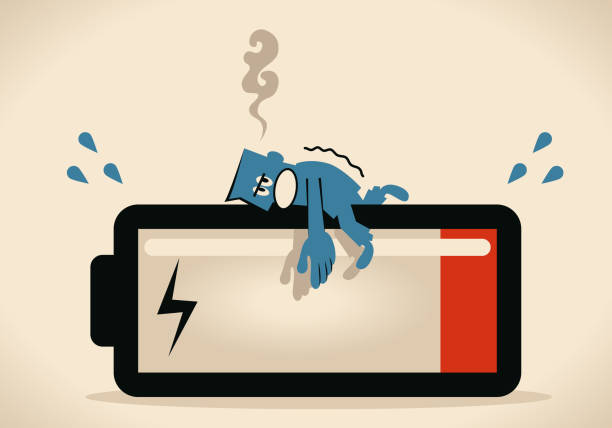The quality of UPS batteries can vary from manufacturer to manufacturer, but even the best batteries have a limited life span.
Lead-acid batteries are essentially “living” products and will gradually discharge during storage, but this can be minimized by lowering the storage temperature and recharging the battery regularly. If the battery is to be stored and charged for more than three months, the manufacturer’s recommendations should be followed.
Battery failure can be due to a manufacturing defect or an error caused by improper installation or use. This section discusses the various problems that can occur in both cases.
Non-industrial failure
Physical damage
This can occur if batteries are not properly stored, transported, or installed. Dropping or bumping the outside of a battery can cause internal damage. Manufacturers’ packaging should be used for transportation and care should be taken during installation. Batteries should not be installed or stacked without protective packaging. Over-tightening the battery connector can cause structural damage between the poles and the plates. Loose connectors can increase electrical resistance and cause heat to be generated. When installing or replacing, connections should be secured in accordance with the manufacturer’s recommended tightening torques.
Sulphation
When a battery is left discharged for an extended period of time, a chemical reaction occurs. This reaction is called “sulphation” and results in a permanent degradation of the battery’s performance. Typical visible signs of sulphation are a white deposit on the positive pole and a non-oxidized metallic sheen on the negative pole.
Damage can occur if the battery is completely discharged during a mains failure while connected to the UPS and then disconnected, or if the battery is not charged immediately after mains voltage is restored. Another common problem occurs when the UPS is turned off but the battery is not isolated. In this case, the battery discharges continuously and very slowly through the DC capacitors of the UPS until it reaches a minimum value. The longer the battery is connected, the more intense the sulphation reaction becomes. After that, the battery is usually beyond repair.
Excessive cycling
UPS batteries are designed to discharge their large capacity in standby mode in a short period of time, usually 5 to 15 minutes. Such batteries can only handle a limited number of cycles (discharge and charge). Unlike the “cyclic” batteries used in cars, these are changed every day. When a battery is cycled, small amounts of active material are constantly lost from the plates, which reduces the performance of the battery.
Normally, a new battery’s capacity is 7% higher than its design capacity, which allows for initial testing to verify its life during installation and commissioning. However, if the battery is regularly discharged by more than 35% for testing purposes, its life will be significantly reduced. If a new UPS has a 5-minute battery capacity, a 2-minute battery test once a month will ensure that the battery is discharged within the first year of use. If the battery is connected to a system with long battery life, e.g. more than 3 hours, the UPS cut-off voltage should be set to a higher value to avoid deeper discharge at regular intervals. Also visit: top dry battery prices in Pakistan
Recharging
When installing or replacing batteries, the charging characteristics of the battery should be set according to the manufacturer’s recommendations: If the charging voltage or current supplied by the UPS is too high, the battery will overheat and the electrolyte will begin to evaporate. Overcharging accelerates the degradation of the active material and can result in the battery swelling or bursting, or the loss of excess hydrogen. This is a serious situation and immediate emergency action must be taken. Overcharging usually occurs when the original battery has been replaced with one of lower capacity or with fewer blocks and the charging characteristics of the UPS have not been adjusted accordingly.
Undercharge
An undercharge occurs when the UPS is unable to apply an acceptable voltage or current to fully recharge the battery. This results in progressive sulphation, which reduces the performance of the battery. This is usually caused by a series of batteries requiring more charging current than the UPS can physically provide, or when the UPS is improperly configured.
Manufacturing Defects
The manufacturing standards of major OEMs like Yuasa imply that manufacturing defects can occur, but this is rare. It is clear that manufacturing defects are more common with less expensive brands that use lower quality manufacturing processes and materials.
Short circuit/battery failure
This is usually the case with batteries that have a short life span. The specific weight of the acid in one cell of a battery is. Much lower than that of the other cells. In the event of a heavy discharge, the affected cell overheats and prevents the battery. From recovering properly when recharged, resulting in sulphation.
Internal crack
Due to an internal structural break in the battery, it is not possible. To read the voltage at the battery terminals. Individual cells will show good specific gravity values.
Overview
Battery failures can be minimized by providing high-quality batteries and ensuring. That they are properly stored, installed, and configured in UPS. All batteries have a limited life, but their life can be. Extended if the battery system is. Operated in a proper environment if the charge and discharge characteristics are. Regularly checked and recorded, and if the UPS charging parameters are. Set according to the battery set.
Read more:
Why online UPS systems are essential for VoIP phones
